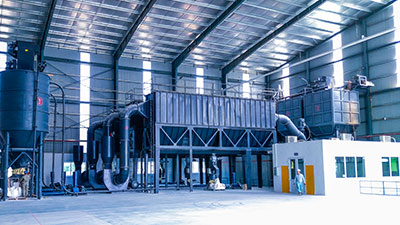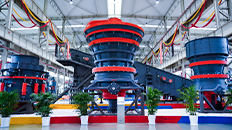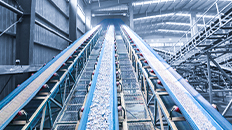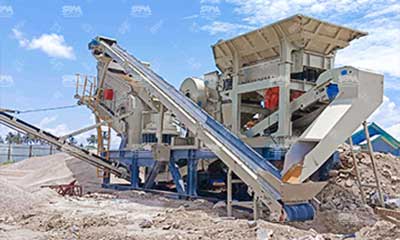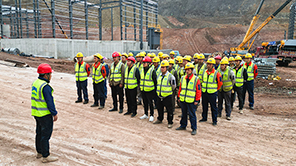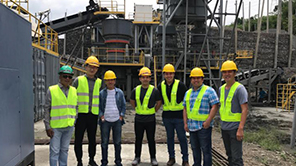Summary:At present, as the mainstream supply and demand of sand and gravel market, machine-made sand provides strong resource support for infrastructure construction, water conservancy and hydropower, chemical industry, etc.
At present, as the mainstream supply and demand of sand and gravel market, machine-made sand provides strong resource support for infrastructure construction, water conservancy and hydropower, chemical industry, etc. With the development of economy, the state has also put forward higher requirements for machine-made sand.

Here are 9 aspects about the standards of machine-made sand.
1, Definition of machine-made sand
According to the national standard, all machine-made sand and mixed sand that have been treated with soil removal are collectively referred to as artificial sand. The specific definition of machine-made sand is rock particles with a particle size of less than 4.75mm made by mechanical crushing and screening, but does not include soft rock and weathered rock particles.
2, specifications of machine-made sand
At present, artificial sand is basically medium-coarse sand, the fineness modulus is between 2.6 and 3.6, the particle gradation is stable and adjustable, and contains a certain amount of stone powder. In addition to the 150μm screen residue has increased, the rest of the screen residue are triangular or rectangular body, rough surface, sharp edges.
However, due to the different ore sources for the production of machine-made sand and the different equipment and processes for the production and processing, the grain type and gradation of machine-made sand may have great differences. For example, some machine-made sand contains more needle-like particles and the particle gradation of the two ends is large and the middle is small, but as long as it can meet all the technical indicators of artificial sand in the national standard, it can be used in concrete and mortar.
Those that do not meet the technical requirements of the national standard artificial sand cannot be used immediately, because the grain shape and gradation of the artificial sand can be adjusted and improved. The above characteristics of the mixed sand are reduced by the mixing ratio of machine-made sand.
The specifications of machine-made sand are divided into four types according to the fineness modulus (Mx): coarse, medium, fine and extra fine:
The fineness modulus of the coarse sand is: 3.7-3.1, and the average particle size is more than 0.5mm;
The fineness modulus of the medium sand is: 3.0-2.3, the average particle size is 0.5mm-0.35mm,
The fineness modulus of fine sand is 2.2-1.6, and the average particle size is 0.35mm-0.25mm;
The fineness modulus of extra-fine sand is: 1.5-0.7, and the average particle size is below 0.25mm;
The larger the fineness modulus, the coarser the sand is; the smaller the fineness modulus, the finer the sand is.
3, Grade and use of machine-made sand
Grade: The grade of machine-made sand is divided into three grades: I, II, and III according to their skill requirements.
Use:
Class I sand is suitable for concrete with strength grade greater than C60;
Class II sand is suitable for concrete with strength grade C30-C60 and frost resistance, impermeability or other requirements;
Class III sand is suitable for concrete and construction mortar with strength grade less than C30.
4, Requirements of machine-made sand
The particle size of machine-made sand is between 4.75-0.15mm, and there is a certain proportion limit for stone powder smaller than 0.075mm. Its grain size is 4.75, 2.36, 1.18, 0.60, 0.30, and 0.15. The particle size should be continuous, and each particle size should have a certain proportion. The grain shape should be a cubical, and there are certain restrictions on the content of needle-like and flake particles.
5. Grain gradation of machine-made sand
The grain gradation of sand refers to the matching ratio of sand particles. If it is sand of the same thickness, the gap between them is larger; when two kinds of sand are matched, the gap between them is reduced; when three kinds of sand are matched, the gap is smaller. It shows that the porosity of the sand depends on the matching degree of the particle size of the sand. Well-graded sand can not only save cement, but also improve the compactness and strength of concrete and mortar.
6, Raw materials to produce machine-made sand
The raw materials for making machine-made sand are usually granite, basalt, river pebble, cobblestone, andesite, rhyolite, diabase, diorite, sandstone, limestone and other varieties. The machine-made sand is distinguished by rock types, with different strength and use.
7, Grain shape requirements of machine-made sand
Construction crushed stone has strict proportion restrictions on needle-flake particles. The main reason is that the cubic particles have edges and corners, which can play the role of mutual locking between particles. At the same time, the cubic particles have stronger adhesion than the needle-flake particles and round particles, and occupy a larger surface area.
8, Characteristics of machine-made sand
The characteristics of the concrete prepared with machine-made sand are: the slump is reduced and the 28d standard strength of the concrete is improved; if the slump is kept constant, the water demand increases. But on the premise of not adding cement, when the water-cement ratio increases, the measured strength of concrete does not decrease.
When the proportion of concrete is carried out according to the law of natural sand, the water demand of artificial sand is large, the workability is slightly poor, and it is easy to cause bleeding, especially in low-strength concrete with less cement consumption; However, if the proportion of concrete is designed according to the characteristics of artificial sand, by rationally utilizing the stone powder in the artificial sand and adjusting the sand ratio of the artificial sand, it is possible to prepare concrete with good workability.
The proportioning design method of ordinary concrete proportioning design regulations is completely applicable to machine-made sand. The most suitable artificial sand for preparing concrete has a fineness modulus of 2.6-3.0 and a gradation of class II.
9, Inspection standard of machine-made sand
The state has standardized fine aggregate inspection standards, and the main inspection items are: apparent relative density, firmness, mud content, sand equivalent, methylene blue value, angularity, etc.



